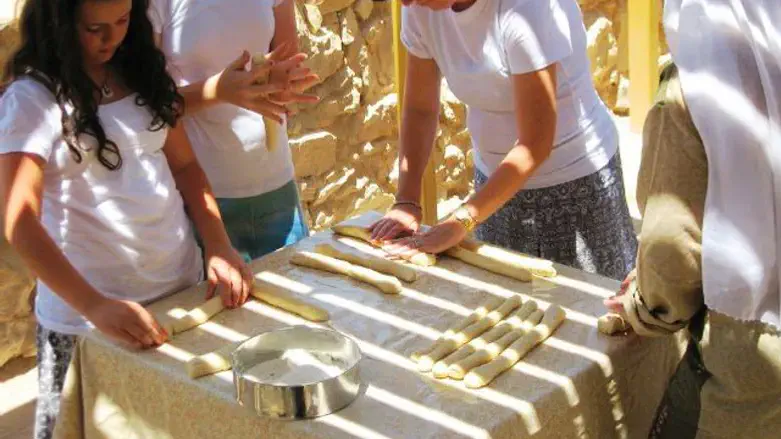
Rabbi Dovid Tiechtel leads Chabad at the University of Illinois.
As hostages emerged from Hamas captivity, the world caught its first glimpse of 20-year-old Agam Berger. Though her body had been shackled, her soul had never bowed. While most define freedom as the ability to move unhindered, Agam, while locked in the suffocating darkness of Gaza’s terror tunnels, was freer than her captors would ever be.
In that abyss, where cruelty reigned and the sun dared not reach, Agam wove a quiet but unbreakable rebellion. She chose to keep kosher, to keep Sabbath, to whisper blessings over every morsel of food, no matter how her stomach growled from maltnutrition. Though her captors sought to break her, she responded not with despair, but with faith. Her body was imprisoned; her soul soared.
Days earlier, four female soldiers had been freed. Their first act of defiance was visible in their expressions—unbowed, unbroken. The second was the braids in their hair.
Braids, meticulously woven by Agam, the last Israeli woman soldier held in Gaza.
The simple act of braiding—of intertwining, strengthening, binding—has now become a symbol of unity across the Jewish world. Women and girls throughout Israel and beyond have braided their hair in solidarity. Jewish day schools in America encouraged students to wear braids on the day of Agam’s release. In synagogues around the globe, challah-braiding events transformed a gesture into a movement. Even El Al flight attendants wove braids into their hair, carrying Agam’s strength into the skies.
But this is more than an act of support—it is a testament to the Jewish people’s eternal interconnectedness.
I am reminded of a talk by Esther Wachsman about her son, Nachshon—kidnapped and murdered by terrorists In Israel in 1994. She recalled how, in those desperate days, she had pleaded with Jewish women worldwide to light Shabbat candles and pray for his return. Thousands kindled flames for the first time, their separate sparks joining into a collective blaze of hope.
Esther spoke of the profound contrast between the candles of Shabbat’s beginning and those of its end. The Sabbath begins with individual flames—distinct, solitary. Yet as it departs, we light the Havdalah candle, its multiple wicks intertwined, creating a single, unified glow. Over the course of Shabbat, we, too, transform—from separate souls to a single, bound people.
And now, through the braids Agam so carefully wove, we saw that same unbreakable unity manifest once more.
Last week’s Torah portion recounts the plague of darkness, a thick and stifling blackness that paralyzed Egypt. But for the Children of Israel, “there was light in their dwellings.” Commentators reveal that this light was not merely physical—it was spiritual. It accompanied them wherever they went, even into the homes of their oppressors.
So too, in the blackest depths of Gaza, where the sun’s rays could never penetrate, Agam and her fellow captives radiated divine light. Their tormentors, though above ground, remained trapped in a deeper, more profound darkness.
And now, as Agam steps back into the world, that light continues to spread—woven through the braids of young girls, flickering in the candles of Shabbat, carried in the hearts of an eternal people.
For what is a braid, if not the story of the Jewish people? Strands, separate and distinct, twisting together to form something stronger, something unbreakable. Just as Agam wove those braids with her hands, so too has Jewish history been braided with suffering and resilience, with darkness and defiant light.
May this light grow ever stronger, until it shatters the night completely—banishing all suffering, all war, and all pain. And may it illuminate the path to a world redeemed, to the dawn we have long awaited, with the coming of Moshiach.
May it be very soon.